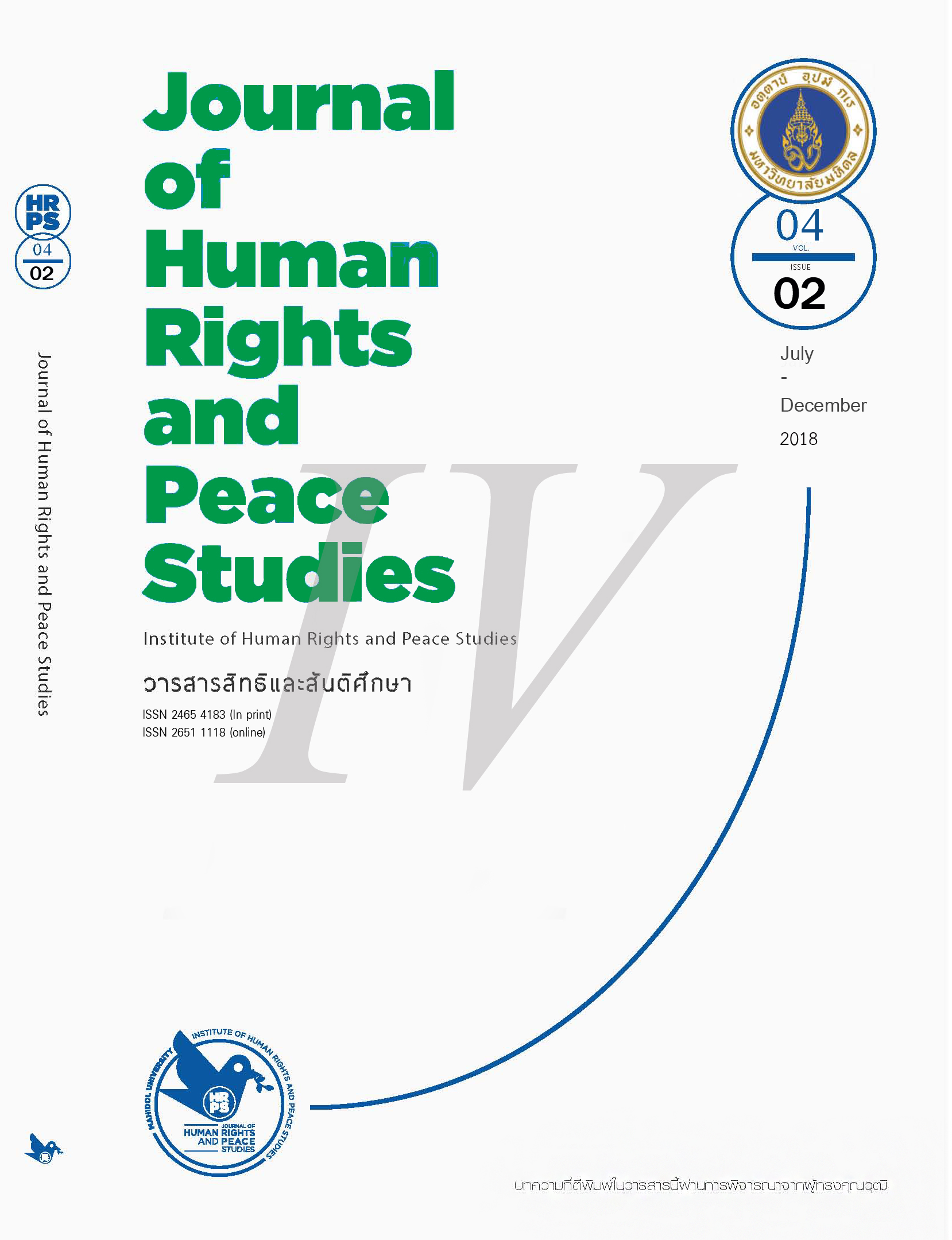The Third Force and the Architecture of Civil Society-State Relations in the Transition in Myanmar, 2008-2017
Main Article Content
บทคัดย่อ
Myanmar has embarked on a political transition in 2011, a transition better described here as a transition to a hybrid system, with elements of democracy and elements of military rule. Building on the existing literature on transitions, political crises, civil society and political influence, the present article attempts to define what the role of civil society has been in this process. Using the author ‘s concepts of a social stupa, in Myanmar, and of the architecture of civil society-state relations, observed through various points of contacts between the two, an argument is made that political influence is stronger in the points of contact at the top of the social stupa, where the civil society elite meets political elite. In that sense, civil society leaders can be seen as group that organically channels the voice of civil society to those in power. This explains the strategy behind the Third Force, a group of civil society leaders that gained influence in the wake of cyclone Nargis in 2008, had a significant impact on the political process, and officially or semi-officially became advisors to President U Thein Sein from 2011 to 2016. The article then argues that much of these ties have been cut by the NLD government, but that civil society-state relations have nevertheless been profoundly re-shaped in the last decade.
Article Details
ทัศนะ ข้อคิดเห็น ภาพที่ปรากฏในวารสารเล่มนี้ เป็นความคิดเห็นส่วนตัวของผู้เขียน บรรณาธิการและกองบรรณาธิการไม่จำเป็นต้องเห็นพ้องและไม่ถือเป็นความรับผิดชอบ ลิขสิทธิ์ในบทความเป็นของผู้เขียนและสถาบันสิทธิมนุษยชนและสันติศึกษา มหาวิทยาลัยมหิดล ห้ามผลิตซ้ำ เก็บในระบบที่ค้นหาได้ หรือเผยแพร่ต่อส่วนใดส่วนหนึ่งของวารสารเว้นแต่จะได้รับอนุญาตเป็นลายลักษณ์อักษรจากบรรณาธิการ หรือได้รับอนุญาตตามกฎหมาย หรือตามเงื่อนไขขององค์กรลิขสิทธิ์ภาพถ่ายหรือกราฟฟิก สงวนลิขสิทธิ์ในการนำไปใช้ประโยชน์ในเชิงพาณิชย์ การนำไปใช้โปรดอ้างอิงให้ถูกต้องตามหลักวิชาการ


